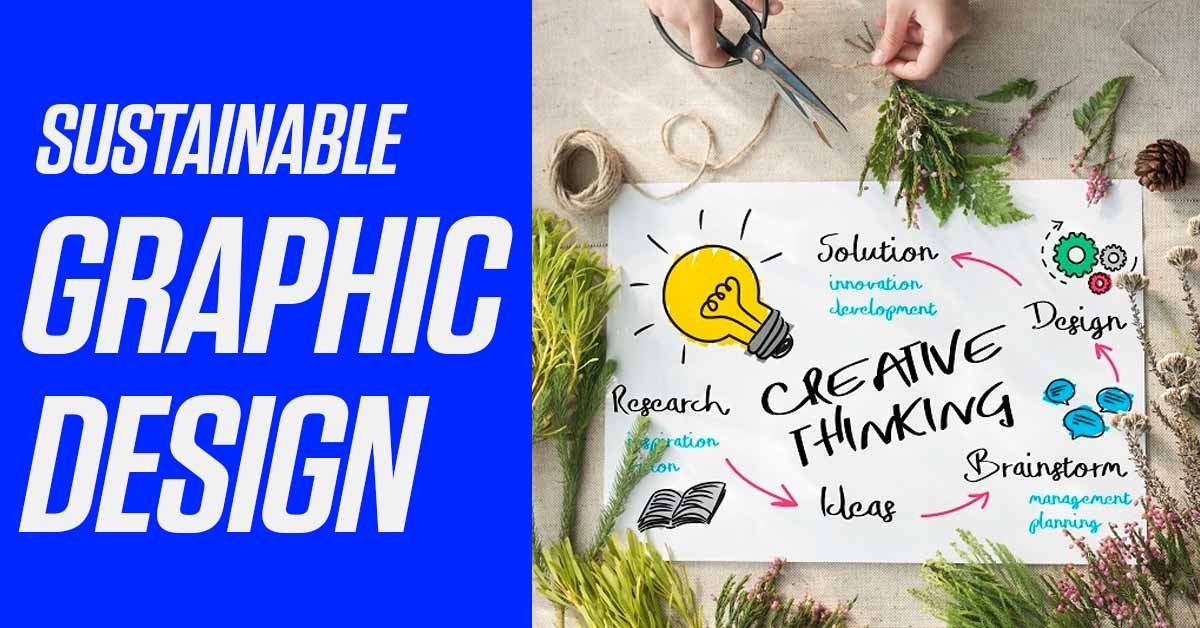Sustainable graphic design is an increasingly important consideration in the creative industry, focusing on minimizing environmental impact while maintaining high-quality output. As the world becomes more eco-conscious, designers are seeking ways to integrate sustainable practices into their workflows. This detailed guide explores eco-friendly practices and tips for achieving sustainability in graphic design.
What is Sustainable Graphic Design?
Sustainable graphic design involves creating visual content with a minimal environmental footprint. This includes using eco-friendly materials, reducing waste, optimizing digital practices, and promoting sustainability through design.
Why is Sustainable Graphic Design Important?
Environmental Impact
The design industry can contribute significantly to environmental issues, such as deforestation, pollution, and waste. By adopting sustainable practices, designers can help reduce these negative impacts.
Consumer Demand
Consumers are becoming more aware of environmental issues and prefer brands that prioritize sustainability. Sustainable graphic design can enhance brand reputation and appeal to eco-conscious audiences.
Regulatory Compliance
As governments implement stricter environmental regulations, adopting sustainable practices can ensure compliance and avoid potential fines or penalties.
Eco-Friendly Practices in Graphic Design
1. Sustainable Materials
Choosing sustainable materials is crucial for reducing environmental impact in print design. Opt for:
- Recycled Paper: Use paper made from recycled fibers to reduce the demand for virgin paper, saving trees and energy.
- FSC-Certified Paper: Ensure the paper comes from responsibly managed forests by selecting Forest Stewardship Council (FSC)-certified paper.
- Vegetable-Based Inks: Traditional petroleum-based inks can be harmful to the environment. Vegetable-based inks are a more eco-friendly alternative, derived from renewable resources and producing fewer volatile organic compounds (VOCs).
2. Digital Design Considerations
Digital design also has an environmental impact due to the energy consumption of servers, data centers, and devices. Adopt these practices to minimize digital footprints:
- Optimize File Sizes: Smaller file sizes reduce server load and energy consumption. Compress images and files without compromising quality.
- Eco-Friendly Web Hosting: Choose web hosting providers that use renewable energy or have carbon offset programs.
- Efficient Coding: Use clean, efficient coding practices to ensure websites and digital products run smoothly and consume less energy.
3. Reduce, Reuse, Recycle
Apply the three Rs—Reduce, Reuse, Recycle—to your design processes:
- Reduce: Minimize waste by designing efficiently. For example, create versatile templates that can be easily adapted for multiple uses.
- Reuse: Reuse design elements and materials whenever possible to reduce the need for new resources.
- Recycle: Ensure that all materials used in the design process, such as paper, ink cartridges, and packaging, are recyclable or come from recycled sources.
4. Sustainable Packaging Design
Packaging is a significant part of graphic design that can impact the environment. Implement these sustainable practices:
- Minimalist Design: Reduce the amount of material used in packaging by designing with simplicity in mind.
- Eco-Friendly Materials: Use biodegradable, recyclable, or compostable materials for packaging.
- Efficient Design: Design packaging that optimizes space and reduces the need for additional shipping materials.
5. Green Printing Practices
When printing is necessary, follow these eco-friendly printing practices:
- Digital Printing: Digital printing is generally more sustainable than traditional methods, as it produces less waste and uses fewer chemicals.
- On-Demand Printing: Print materials only as needed to avoid excess inventory and waste.
- Eco-Friendly Printing Companies: Partner with printing companies that prioritize sustainability through practices like using recycled paper, eco-friendly inks, and energy-efficient equipment.
6. Promoting Sustainability through Design
As a graphic designer, you have the power to promote sustainability through your work:
- Educate Clients: Inform clients about the benefits of sustainable design and encourage them to adopt eco-friendly practices.
- Sustainable Messaging: Incorporate sustainability themes and messages into your designs to raise awareness and inspire action.
- Green Certifications: Seek certifications from reputable organizations that recognize sustainable design practices, such as the Green Business Certification or Cradle to Cradle certification.
Tips for Implementing Sustainable Graphic Design
1. Stay Informed
Stay updated on the latest trends, technologies, and best practices in sustainable design. Follow industry blogs, attend webinars, and participate in sustainability-focused events.
2. Collaborate with Eco-Conscious Partners
Work with suppliers, printers, and clients who prioritize sustainability. Building a network of eco-conscious partners can enhance your ability to create sustainable designs.
3. Prioritize Longevity
Design with longevity in mind. Create timeless, versatile designs that won’t need frequent updates or replacements, reducing the overall environmental impact.
4. Optimize Your Workflow
Streamline your design processes to reduce waste and improve efficiency. For example, use digital mockups instead of printed proofs and share digital files rather than physical copies whenever possible.
5. Advocate for Change
Use your platform as a designer to advocate for sustainability. Share your knowledge, encourage others in the industry to adopt eco-friendly practices, and lead by example.
Conclusion
Sustainable graphic design is not just a trend but a necessary evolution in the design industry. By adopting eco-friendly practices and continually striving to reduce your environmental impact, you can contribute to a more sustainable future while still producing high-quality, impactful designs. Remember, every small step towards sustainability counts, and as a graphic designer, you have the power to make a significant difference.
Embracing sustainable graphic design practices is essential for reducing environmental impact and meeting the growing demand for eco-friendly solutions. By following the tips and strategies outlined in this guide, you can create beautiful, effective designs that are kind to the planet.
